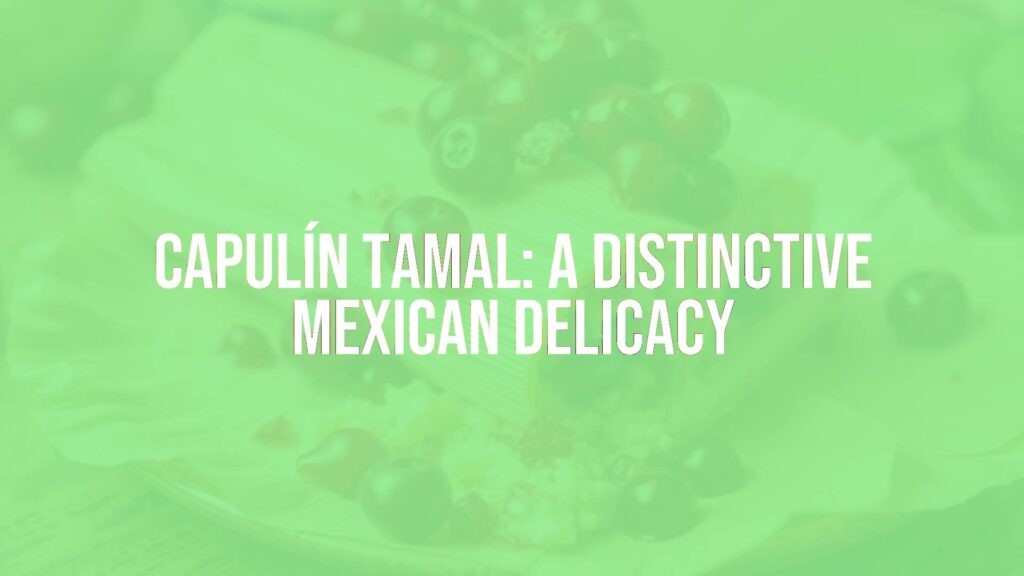Exploring the Unique World of Capulín Tamal
The capulín tamal is a distinctive and charming treat within the diverse landscape of Mexican tamales. Characterized by the use of capulín, or wild cherry (Prunus salicifolia), this tamal weaves together the sweet, slightly tart notes of its namesake fruit with the comforting texture of steamed masa. Often enjoyed during celebrations or as a seasonal delight, the capulín tamal offers a taste experience that is as memorable as it is unique.
Origins and Cultural Significance
The cultivation and use of capulín cherries trace back to pre-Hispanic times, especially in central and southern Mexico where the fruit grows abundantly in the wild. Indigenous groups have long cherished the capulín for its flavor and medicinal qualities, incorporating it into a range of traditional foods and beverages. The capulín tamal is a reflection of this heritage, often prepared during festivals or gatherings that celebrate the fruit’s harvest and the enduring traditions of rural Mexican communities.
Defining Ingredients and Preparation
At its core, the capulín tamal is made from freshly ground masa (corn dough), capulín cherries (either whole, mashed, or turned into a sweet jam), sugar, and sometimes a touch of cinnamon or anise for aromatic warmth. The masa is often enriched with butter or lard to achieve a soft, moist texture. The mixture is spread onto softened corn husks, filled generously with the capulín-based filling, then wrapped and steamed until perfectly set.
The defining feature of this tamal is the interplay between the soft, pillowy masa and the fruit’s distinctive flavor profile. Capulín cherries impart a subtle sweetness and a gentle acidity, making the tamal both comforting and refreshing.
Variations and Ingredient Flexibility
While traditional recipes highlight the purity of fresh capulín, variations abound. In areas where the fruit is scarce, cooks may substitute with other small, tart wild cherries or blend dried capulín with sugar and a splash of water to mimic the original texture and taste. Some recipes use a thin layer of capulín jam, while others fold in fresh fruit pieces to amplify the flavor and burst of color inside the tamal.
Modern takes might include additional ingredients such as chopped nuts, raisins, or grated coconut. Sweeteners like piloncillo (unrefined cane sugar) are sometimes favored for their rich depth, though white sugar remains common.
Serving Suggestions and Pairings
Capulín tamales are typically enjoyed warm, either as a breakfast treat or a festive dessert. They pair wonderfully with hot drinks such as Mexican atole, café de olla (spiced coffee), or herbal teas. At communal events, these tamales lend a touch of sweetness among savory counterparts and highlight seasonal ingredients at their best.
Appearance and Sensory Appeal
Encased in the familiar corn husk wrapper, a capulín tamal reveals a pale masa laced or filled with deep purple streaks where the fruit is present. The aroma hints at vanilla and spice, while the first bite brings soft, delicate masa balanced by pockets of sweet-tart fruit. Its inviting color and pleasant fragrance make it a favorite during spring and early summer, when capulín is readily available.
Conclusion
The capulín tamal stands out in Mexican culinary tradition for its celebration of local, seasonal fruit and its ability to bridge the gap between sweet and hearty. Whether enjoyed in its traditional form or explored with creative variations, this tamal captures the rich diversity of Mexico’s regional flavors and the enduring ingenuity of its food culture.

